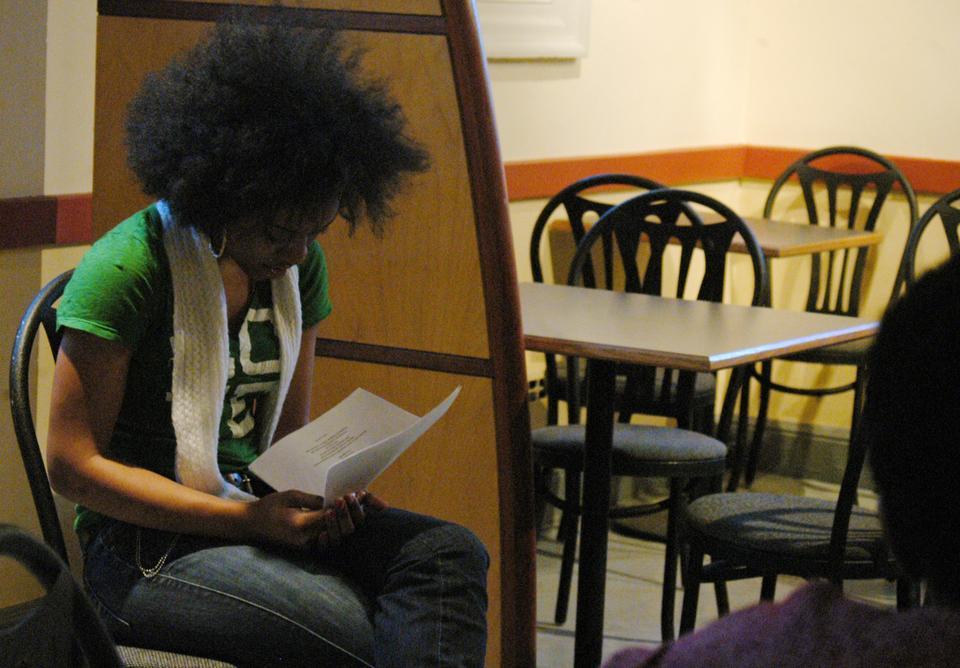
News
Cambridge Residents Slam Council Proposal to Delay Bike Lane Construction

News
‘Gender-Affirming Slay Fest’: Harvard College QSA Hosts Annual Queer Prom

News
‘Not Being Nerds’: Harvard Students Dance to Tinashe at Yardfest

News
Wrongful Death Trial Against CAMHS Employee Over 2015 Student Suicide To Begin Tuesday

News
Cornel West, Harvard Affiliates Call for University to Divest from ‘Israeli Apartheid’ at Rally
Festival Celebrates Diversity
Black Arts Festival helps student artists reflect on issues of identity

For college students, issues of identity, origins, and the future are, admittedly, sensitive subjects. More importantly, however, they are pressing ones that ought to inspire open discourse about people’s backgrounds and their aspirations.
Such is the philosophy behind the 12th annual Dr. Walter J. Leonard Black Arts Festival, which brought Black Art to the forefront of Harvard’s campus from March 4 through 6. Presented by the Kuumba Singers of Harvard College, the Black Arts Festival (BAF) focused on giving a voice to artists from Harvard and beyond, allowing them to reflect on the roots of their identities.
For many, this introspection was inspired by the idea of “Sankofa”—the theme of BAF this year. A Ghanaian word literally meaning, “go back and take,” this expression inspired artists from all walks of life to create works which reflected their cultural and personal background. Beyond that, “Sankofa” implies using one’s history as an impetus to make progress.
“You just don’t take history for granted... you move forward as it inspires you,” explains Henrietta A. O. Afari ’11, visual arts coordinator of the BAF board.
The festival invited various interpretations of what it means to look back and move forward. This year, BAF began with a panel discussion about Black Art featuring renowned poet and writer Amiri Baraka, one of the central figures in the Black Arts movement in Harlem during the 1960s. The panel also featured two perspectives from a younger generation—spoken word artist Joshua Bennett and scholar Cameron Leader-Picone, a fellow at Harvard’s W.E.B. Du Bois Institute. In defining Black Art, Baraka spoke of his experiences growing up in a segregated society and took an explicitly political stance on what Black Art ought to do: “We create art because we want to change the world... we want to liberate the world, liberate the people.”
Bennett and Leader-Picone took more open stances regarding what qualifies as Black Art, noting that expressions of black identity can reveal a variety of different cultural and social experiences. However, the two made a point of honoring Baraka’s opinions and his contributions to the movement.
“I think I see Black Art changing as material circumstances change,” Bennett said. Then, addressing Baraka, Bennet said, “Your generation gave us that... and I think that’s a beautiful way Black Art encompasses a spectrum of the human experience we haven’t seen before.”
This spirit of openness was also present throughout the span of three days and accounts for the vast scope of art and artists involved. Apart from the panel with Baraka, the festival incorporated events drawing from almost every possible artistic discipline, including a film screening, multiple concerts, and a visual art gallery. The art exhibit, which will be located in the Holyoke Center arcade through the end of March, includes paintings, photography, and mixed-media pieces. According to Afari, this range of artistic forms emphasized the importance of the multi-disciplinary nature of the festival.
“It’s about giving students a voice in several aspects of the arts,” she said.
While these events and exhibits undoubtedly focus on bringing Black Art to Harvard’s campus, BAF makes a point of celebrating diversity. To that end, Afari pointed out that the festival seeks to serve as a unifying agent for an audience far beyond the black community at Harvard.
“Harvard is multicultural... even though we are all unique, we are not separate entities. That is what multiculturalism is for me, and if anything at all, that’s what BAF is trying to achieve,” Afari said.
In this spirit of engaging people from all backgrounds, the festival featured a casual open-mic session. Beyond simply hearing spoken-word performances, the audience participated in conversation with the artists themselves.
Another event, titled “Old Skool Meets New School,” consisted of a series of workshops in the arts for local high school students. These lessons are a part of BAF’s efforts to bring Black Art to a community larger than Harvard alone. For Afari, this inclusive spirit is one of the best aspects of BAF because “everyone can identify with it, no matter what culture.”
Ultimately, however, this year’s BAF emphasized the individual experience as its central theme. In the spirit of “Sankofa,” the art featured at the festival drew heavily upon artists’ personal narratives and how those experiences pointed them toward the future. Whether it was Baraka reminiscing about the racial politics of the 1960s, or student poets spitting verses about their aspirations, this year’s BAF brought personal histories to the forefront as a means of moving forward.
Want to keep up with breaking news? Subscribe to our email newsletter.
